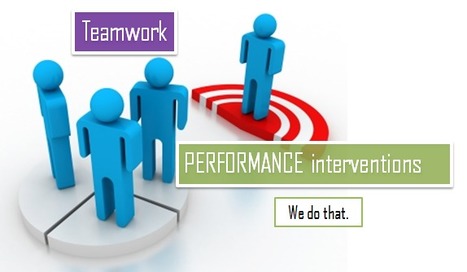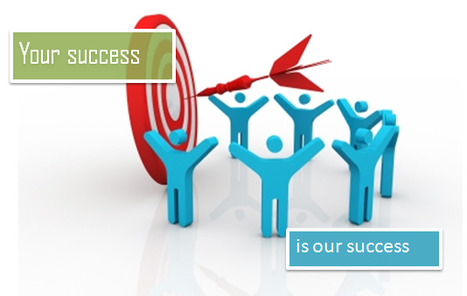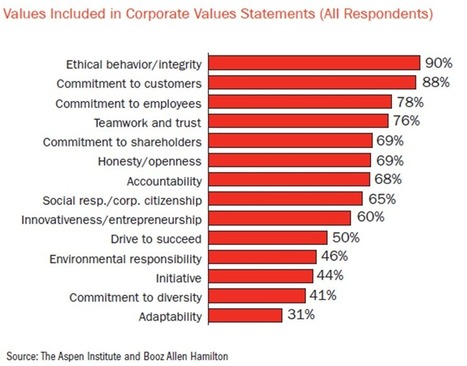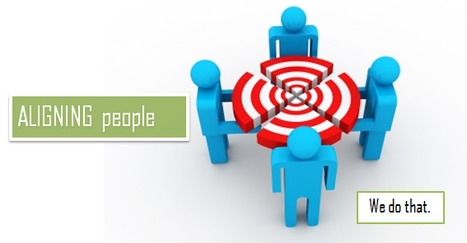 Your new post is loading...
 Your new post is loading...
12 Ways to Fail in Goal SettingBusiness InsiderSetting goals that are too small does not challenge you enough which consequently makes you think those goals are not worth pursuing.
Our thinning churches: Can tweets fill seats?Florida Times-UnionSo does that equate to our growing less religious? ... The trend is particularly evident among the young, who are far less likely to be affiliated than their elders. Is your religious organization or other non profit organization is more "connected" than you? We often assume because we pay people to work we can share information when we want and as we want. What if all your employees were volunteers? How would you keep them aligned and committed to your strategy? If you want passion from employees than give them opportunity to build that passion. www.pyramidodi.com
Fast CompanyDesigning The One-Week Team Sabbatical That Will Transform Your CompanyFast CompanyAs Banner puts it, “Take the entire team offsite for a week, scope out the projects, and focus on getting things done.” What elements make for a...
I love the "factory week" name for this activity. We have organized events like this for years. I highly recommend them. Here are some tips from our experience:
1. Get a facilitator and make a plan.
Factory Weeks don't fall into the same category as a Kaizen event... although one could. Usually, these events don't fit into the typical formula. They often require a formula of their own. Hire or assign a facilitator who can help you to develop a process that fits the challenge and the results you are working for. Your facilitator can help you think through the process when determining the people and resources you should have available. If you hit the ground running, you will likely have a great week with results that make everyone proud.
2. Invite everyone you need
There are times when you need to get the whole system (or much of it) into the same place and time and shut out other distractions and focus. So, don't limit it to managers -- in fact sometimes it may be many managers who help man the store while the others are doing the breakthrough building work.
3. Remember you are creating focus on a specific outcome
Focus is a rare commodity these days. Focus is alingment. Make sure you have limited distractions. Make sure everyone understands the purpose and expected outcomes. Have guidelines (ground rules) for the week and stick to them.
4. Work hard. Play hard.
Make work during your Factory Week as you would like work to be - enjoyable and fullfilling for everyone. Winning brings that and in this week you will have opportunities to make big progress. When you do, celebrate! You will get a "2-fer" from the week: 2 accomplishments for the price of one: 1. A real breakthrough in accomplishing a task that has been hanging over your group for sometime and 2. A breakthrough in some important relationships.
Here are some events we have facilitated in the past, maybe they will give you ideas for your "factory week":
- Redesign of an organization and layout to make room for a new product unit
- Total clean up and "fix-up" of a key piece of equipment
- A nagging performance problem "that's always been there"
- Redesign of a website
- Development of a social media campaign
- Figuring out how to implement the local part of a global strategy
- Analyzing customer data and creating plans for
- Focusing on a specific customer, visiting them and working on specific improvements to help them and grow your business with them
- Cleaning up an important database and creating ways to use the data for improving sales or service.
As I was making this list, I realized I could go on and on. The point is sometimes you have to dedicate time and resources to fixing a problem and a great benefit can be had by organizing a "Factory Week" to get the work done.
The result will be the best team building you could imagine - and it doesn't cost... it pays.
If you would like more information or help on creating your own Factory Week, we would be happy to share ideas
www.pyramidodi.com Contact us
By Billy Bennett When do you work on alignment? When you are "in crisis" is too late. In the 1952 movie High Noon , Gary Cooper played a town Sheriff who finds himself needing help to face the...
Some of our assignments are with business units in crisis. The problem is so challenging, they often require the help of on of our "intensive care" teams to gain stability. One of the first tasks of the team, is to begin immediately to develop personal relationships that will be needed to when asking employees to make the big behavior changes required. We often observe that the "trust" bank account of leaders is empty. Even technically correct actions go nowhere because people find it difficut to follow their lead.
How well do you know your employees?
How well do you know co-workers who supply you with critical information and services?
Don't wait for the crisis to find out.
www.pyramidodi.com
Be sure to sign-up for our performance and alignment tips.
A Starbucks barista. (Photo credit: Wikipedia) A cranky customer snaps at his barista, lodging an unjustifiable complaint about the service, the temperature of the drink…about anything and everything. He came into the store angry (and in pain from...
If you want your employees to respond to customers as one across the organization when opportunity knocks consider doing what Starbucks has done....
Have you mastered the "Latte Method" of responding to unpleasant situations? "We Listen to the customer Acknowledge their complaint, Take action by solving the problem, Thank them and Explain why the problem occured." Have your employees? This is a great basic tool for every person in an organization, not just front line employees. In fact, if this approach is to be genuine (important for any customer intereaction) then everyone must be practicing the steps in all situations where something goes wrong. I am sure you have seen the manager who refuses to acknowledge a problem much less any responsibility for the problem.
Peter Ubel make the point that these skills are essential to successful patient outcomes. More than doctors should take notice... any highly technical profession suffers the same pattern: Intense training on in depth technical aspects of work only to fail when involved in interactions where relationships carry equal importance to successful outcomes:
"According to audio recordings of interactions between patients with metastatic cancer and the senior oncologists...doctors respond appropriately to patients’ expressions of negative emotions less than one in five times."
Wow. If you are an engineer, chemist, programmer, etc... how much better are you than a doctor? Or for that matter, is your barista better at handling difficult people situations than you?
www.pyramidodi.com
San Francisco ChronicleWhat business can learn from Bruce BochySan Francisco ChronicleIn a Harvard Business Review article, Collins says a level-five leader demonstrates compelling modesty, shuns public adulation and is never boastful.
A Similar Experience
Years ago I was monitoring the progress of a very special and intense change process in Oxford Industries. I was then the manager of the Oxford Education Center, our corporate development unit. The change was a major move to redesigning our factories into "modules" - later they would be called "cellular manufacturing" and "self managed work teams". At the time, we were the pioneers so everything was a grand experiment. An interesting observation I made parallels this story about Bruce Bochy - our most successful factories were led by Bruce Bochy... well not by him - but by people very much like him. Humility was how we described the trait. It was not the flamboyant managers or as others called them...charismatic. The successful leader was often described by others as "gentle", "soft spoken", " supportive", "open", and "open to learn". They were also called "clear", "firm", "honest",and "present". They made their facilities successful by moving people forward - together. They engaged people in conversations and were excellent listeners. In fact, they were more about listening to others than telling others. They didn't stand out in the crowd...at first.
I have tried to take lessons from these leaders. It has not been easy. Pride, ego, competitiveness, passion. These often get in the way for me. At the end of the day I try to remember that great leaders are certainly noticed by results and the impact when helping and serving others... more than words.
- When aligning people, take a lesson from Bruce Bochy and the people like him...
- Listen with the purpose of learning and lifting others.
- In a true team workplace, team is very important - don't destroy the others with a high flier who puts self before team.
- Provide space (time, place and activity) for people to build energy having fun.
- Make your "talk" clear, and aimed at making connections to purpose and progress.
- Act like other managers and you will rememberd for being like other managers. Make sure your role models are the right ones.
www.pyramidodi.com
"Strategic intent" lets companies make big, bold bets, regardless of resources.
In the last few articles we've shared the view of strategic belief or strategic intent - picking a point and place to be in the future and working every opportunity to get there. We are in a moment of deep global uncertainty that well become more clear after the US elections, and a few more months of European and Chinese decision points. These are the "breakers" we must row past. Which is why leaders must be very clear on intent and beliefs - the North Star of decision making. Perhaps audacious is just the North Star organizations need to help them thru the crashing waves just ahead.
www.pyramidodi.com
There comes in a time the life of many startups when it starts to become clear that everything is not going according to plan. But how do entrepreneurs tell if they need to keep going all in on the original plan, or pivot to something new?
How do you know when to make a change in direction? Many today are questioning "direction". There are some excellent tips in this article from start-up entrepenuers.
1. As Soon As You Can - Yes, Yes. And first move quickly to see your company from the view of your customers - What does that tell you?
2. Find Goals You're Aligned With. "Its quite the blow to the ego when you wake up one day and realize, 'Wow, this isn't working..."
Yes, it is. Tenacity is a great asset - until it isn't. The art of leadership is knowing when to let go of the things that just are not working and are not likely to work. The process is constantly pulling yourself up out of the micro to see the bigger picture...FROM THE OUTSIDE... especially from the customer.
3. The Feedback-Induced Pivot. "When your customers are consistenly giving you the same feedback..." Right... Just make sure you are not waiting on them to come tell you... GO TO THEM.
4. Don't throw out your code. If you do not know "your code" then you are in trouble. We regularly ask our customers for detailed feedback on our work AND what they value about our work and how we work. If often makes us aware of things we take for granted or are unaware of how important they are to making us special. That's our code... or organization DNA.
5. Your customers tell you what they want.
Yes. So go out and ask them.
www.pyramidodi.com
Online staffing companies, which connect freelancers with remote clients for software and accounting jobs, say they are booming. The trend could change everything from qualifications for hiring to how countries tax workers.
"Trends suggest that we’re heading for a global online arbitrage of opportunity, however, with good workers in bad places able to snatch business away from better-performing environments. If that happens in large numbers, the competition will get really fierce for everyone.
By 2012 most companies will operate with a dynamic hybrid workforce - physically present staff with online staff. That is not unique but the size and scope is. The impact on HR strategies will be huge.
www.pyramidodi.com
The discussion was going to be easy. Two facilities, in the same company, making nearly identical products (to a non-techie like me), with nearly identical mission statements. It didn't turn out...
Check out our latest blog post in our Aligning People series.
Alarming Number of Workers Fail to Wear Required Protective EquipmentSacramento BeeThe same percentage said they would be concerned about potential health and safety issues for their workers if heavy metal residues or other toxic elements were...
Workplace safety is a good study to gain insight concerning organizational alignment. This study hits it squarely - Why in the face of all a serious need will people do things against their own interest?
This study raises questions. My first question is a data question - "Is this data worse, better or the same over the five years data has been collected? Without that data, I make my own conclusion - most workplaces make lots of rules which people don't follow and leaders don't lead people to follow.
The key alginment word in the article is compliance. When you lead change first with "because I said so" (compliance) a significant number of people will respond with the oppositise: resistance and lack of compliance.
What do you think?
www.pyramidodi.com
Via philippe porta
The Dutch call it " getting all of the noses pointing in the same direction". When charting a new course, the single greatest leadership frustration is not coming up with the perfect plan - it's...
Based upon the principles of customer-centricity and operational excellence, Cisco is evolving its organization structure and leadership team for speed, agility, alignment and growth with the following executive appointments: ...
Our thoughts...
When you realize that you have an alignment problem then you will question your "structure". However, if you really intend to make a significant impact - a real difference - it will mean something more than "rearranging the chairs on the Titanic". First identify what winning will look like then identify everything that is getting in the way. Sometimes that will mean changes in leadership - but it is not mandatory to change leaders - just to be certain you have leaders who truly believe in the change.
|
To compete, put your service culture firstSalt Lake TribuneThe ultimate goal is and continues to be to build and protect the national "brand" of high-quality hospitality. How can companies integrate these practices?
Singapore, saw an opportunity to improve its competitive position in the world by focusing on service. Not manufacturing...service. Dawn House, the author of this article says companies should do the same... and we agree. Companies lose when they forget that they are in business to serve. Apple makes great products...but it is the emphasis on customer experience that drives growth and profitability.
Dawn refers to it as "uplifting service". Service that raises the level of service for a nation or industry. Uplifting service also describes a result - the sense the customer has that the service provided is meant to support and remove worry. How uplifting is your service and your service culture?
What lessons can be learned?
Dawn suggests:
1. Leadership Alignment - Look at your leaders. What improvements are needed to make sure that leaders in your organization can support the intense shift to service? For many it stops here. Do they view customers as necessary headaches... or the point of their work?
2. Service Culture Steering Committee - While I may not fully agree with the steering committee as a strategy, the aim is correct - Service Culture must be led and directed. It must be a "big deal". It will require a special emphasis and constant diligence. However, be careful about steering committees that they do not remove leadership obligations from others to lead the service effort.
3. Actionable service education - Dawn is right, you must teach people how to apply fundamental service principles - talk is cheap. If your service education does not have behavioral change as an actionable goal then it will fail. It isessential for building a strong service culture. Your service education leaders should be carefully selected for their understanding, attitude and orientation to new action.
4. System and process integration - With the emphasis on Six Sigma and Lean, many organizations have looked a processes. Often they say they are looking at the Voice of the Customer. However, I have seen few who step into the customers shoes. You must review each process involving customers from the customers viewpoint. We modify our flow charting looking at each step from the view of the customer. We also examine every interaction where a customer is involved - we call it the "cycle of service" and each interaction is a "moment of truth". Dramatic changes have taken place where these simple tools were applied.
How we create Customer Focused Organizations
www.pyramidodi.com
Charisma distracts, destructs, and rewards the wrong leaders.
This brief article reminds us to be cautious in our acceptance of charisma as a desired characteristic in leaders. I have come to similar conclusions over the years. My own observations and have been supported by research that comes to the same conclusion.
Charisma is a "right time, right skill" trait. In fact, I believe truly great leaders get results with a balance of charisma and humility...traits that can be at odds. The great leader is more often a great listener more than a great speech maker.
In a critical transformation at Oxford Industries many years ago we were faced wtih a tidal wave of change. I was lucky to be in a position responsible for observing the various change initiatives as we were all scrambling to remake our business before it disappeared. Of all the observations that stuck with me, none was more fascinating than the observation that the quite, "non-charismatic" leaders were the most successful at making change stick.
Charimsa - as we usually define it (the shining extrovert) - is great for gathering attention and focus on single problems or themes. That's the upside. However, the next step usually requires many individuals to step forward to lead peers. That's where collaboration comes into play. Humility - a willingness to push others forward and ahead... to shine the light on others... even to learn from others...that makes change stick.
Charismatic individuals often attract followers - the problem is when they are just that ...followers not co-leaders.
Are you building teams of people where inspiration is used to move people into the light when they will shine best? Many people leading at the moments they lead best. The great aligning leader works hard to facilitate, coordinate and push those people to step into that light at just the right time. Sometimes it takes charisma.
But then maybe our understanding of charisma - is all wrong? Maybe the real charisma is humility.
www.pyramidodi.com
A team of social scientists gave advice on how to counter rumors, portray rivals effectively and get out the vote.
Have you read Moneyball, the Michael Lewis book about the Oakland Athletics application of statistics and decision science to baseball? If you have then you will appreciate this addition of behavior science to to the art of aligning and engaging people to commit - in this case, in an election. However, it could be for your next business initative. I am working on an article to be posted soon on lessons to be learned form this election. This NY Times article is an excellent bit of insight into the science of engagement and alignment witha cause in this election. If you are in an organization pay close attention and fine tune your engagement initiatives...or ignore them at your own version of GOP peril.
Here are my take-aways for you to act on...
1. Be Competent. Be Warm
We call it High Task-High Relationship. People in the general population have something in common with high performance organizations - they do not sacrifice performance for warm empathetic leadership - or vice versa. Both are essential. You must win the business , and Hearts & Minds.
2. Don't deny negative comments - state what you are for.
Beyond saying "its not true" (which does not score points but makes you feel better)... use the challenge as an opportunity to to state emphatically what you are for, why you are for it, and what will be in it for anyone who goes along with you. Most leaders buckle at the first challenge and are brought down to the level of the challenge. Folks who operate on fear to rally others to their "nay-saying" views can't stand to have a leader painting a clear picture of success and commitment for the betterment of all.
3. Prepare people for "Micro Engagement".
Advertising didn't win the election for the Democrats in the US election, people did - one door, one conversation at a time. They were prepared to deliver a positive message, not to engage in mud-wrestling. They were prepared to win one voter at a time. For an organization implementing major change it is no different. You need allies. Your allies cannot be managers alone. You need to enlist regular front line employees to become believers in your cause and case for change. Then they need to be armed with the skills to help others around them to make the changes necessary to make change successful.
4. Ask for committment at any level.
Leaders often fail when they ask for big committments first - then give up when they don't get them. When you are trying to get change you will be more likely to make significant moves, when you get many people to commit to any level of move they can make...just commit. But how can they commit if you do not ask them to commit?
5. Share the success stories of peers.
Storytelling is a great alignment tool. However, it is more effective when the stories include the peers of your people. When they see or hear about people "like them" making an effort to change - and succeeding - it makes a significant difference in the success of the whole organization. Why do you think marketers are so enamoured with social media? Because people like feeling like they are not alone when taking a risk or making a commitment.
Billy Bennett
If our tips are helpful please click follow
Contact us for more information to help you Align People to your strategy or change initiatives.
www.pyramidodi.com
With such a great track record for attaining goals, here are 5 lessons the CIA can teach us about organization-centric goal management
A great article with a comparison of CIA principles to consider for your organization.
Interested in more tips... sign up!
discuss their issues and challenges with me." As a team leader, what suggestions do you have to deal with this situation? Issac raises a frequent comment from managers. The answer lies first in perspective.... Who is responsible for the relationship in manager staff relations. Of course, as co-workers, everyone should be... But as a leader, YOU are responsible for the depth and quality of your relationships among your associates. Why? Your direction setting skills depend upon those relationships. If that dynamic is weak so is your ability to lead. Every direction you provide will be implemented at the speed of trust. So how good are those relationships? Try this, go ask. www.pyramidodi.com
My Dad’s Story By David Ashton My dad spent his working life in a skilled trade position in a manufacturing environment. He was the type of person that was constantly looking to develop something...
Dave Ashton is our VP of Operations and leads our "Intensive care" teams. This is a wonderful story about vision. I take a few lessons from this story...
1. Envisioning the future is not a one time activity... you refine and refocus as you go. Over time your picture becomes more clear. 2. Creating a future means carving away at things that don't fit. That takes time and work. Too often people create the picture and expect the results to appear. It does not happen that way. in work and organization change success comes from a continuous process of building the picture, working the obstacles, and admiring progress. As a leader, you have to appreciate and manage all three components.
2. The skills of seeing and doing can be learned. Dave's Dad was not born a competitive carver... he worked at it. In fact he worked at learning.
www.pyramidodi.com
The search giant was supposed to report earnings after the close of business today. Instead it jumped the gun and shocked Wall Street and Silicon Valley with a huge miss on both earnings and revenues.
There is a great lesson in this... There's only one thing worse than missing your numbers - and that is missing your numbers and not even being able to report that news correctly.
Confidence is everything when it comes to addressing shortfalls in performance. If you have bad news...be accurate and controlled in the delivery of the news.
www.pyramidodi.com
Virginia Rometty says it boils down to one question.
Strategic Belief. An excellent phliosophy. Organizations and leaders over complicate strategic planning. In a world where things change so rapidly and the amount of information can overwhelm leaders bog down in the micro information that misses important trends.
Hitting the target in one shot is great... however, the ability to adapt your aim while running could be a more useful skill. You can do that better if you give yourself and others the opportunity to innovate while moving toward your strategic beliefs.
top leaders need to find ways .
- Push yourself to see beyond today
- Remove barriers that might keep the organization from making a turn toward the future if opportunity arises.
- Start shifting investments to the resources and assets your people will need to make the turn.
www.pyarmidodi.com
Values form the foundation for a business and help to create the culture of the business. If behavior is not consistent with values, employee engagement will likely decline, and turnover may increase.
Susan reminds us to take the time to look around and check for matches between behavior and the values we talk about. Are they the same? Here's a good exercise to think about:
1. Make a list of your organization values (bet you have a web site where you can find them).
2. Make a list of what you value.
3. Make a list of everything you have done (look at your agenda) for the last 3 days.
4. Is there a match between your activity and the values of the organization... or even your own values?
If someone looked at your list of activities, what would they say are your values?
If you are concerned about people aligning with your organizaiton strategy, goals. etc. then do repeat this exercise with a few people around you. Alignment begins with people doing things that match the things we ask people to care about. When they don't match then words lose their value.
www.pyramidodi.com
100 Best Quotes on LeadershipForbes—Solon; I am reminded how hollow the label of leadership sometimes is and how heroic followership can be.
A great resource for times when you need a little reflection and inspiration.
Mission, Vision, Values, Behavior . Doesn’t every organization have these? I may be cynical, but don't you think many people today are immune to the big 4 alignment tools – the “must...
Business Plans & Goal-Setting for Right Brains: Creative Entrepreneurs Dare to be Different http://t.co/lHLE2X1b... Having problems maintaining focus. Here are some interesting and different alternatives to displaying information visually.
|

 Your new post is loading...
Your new post is loading...
 Your new post is loading...
Your new post is loading...

































Setting goals with the right characteristics is the way to make them real.
Setting goals lets you know where you are going. Without goals you are in motion. With goals you are moving forward.